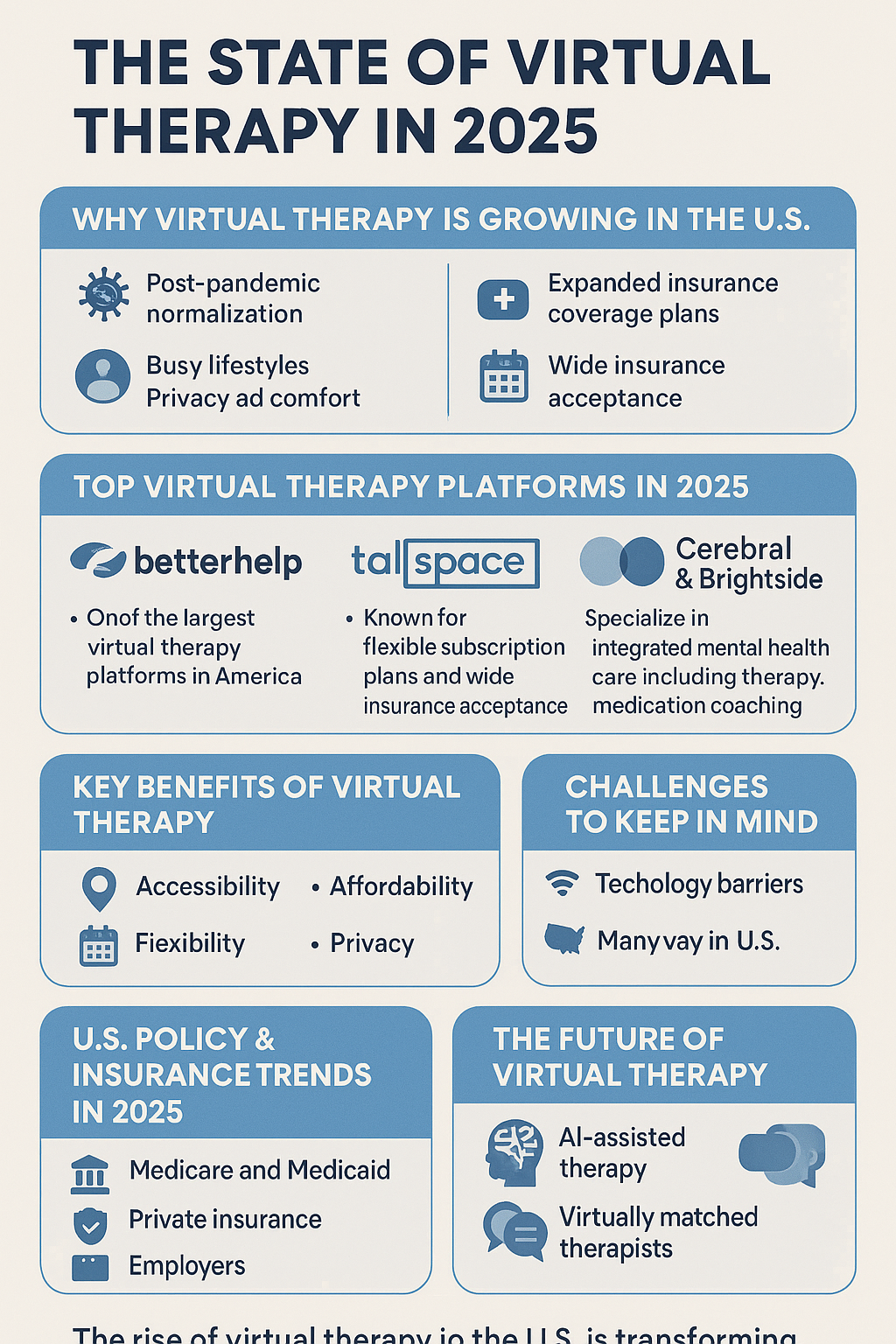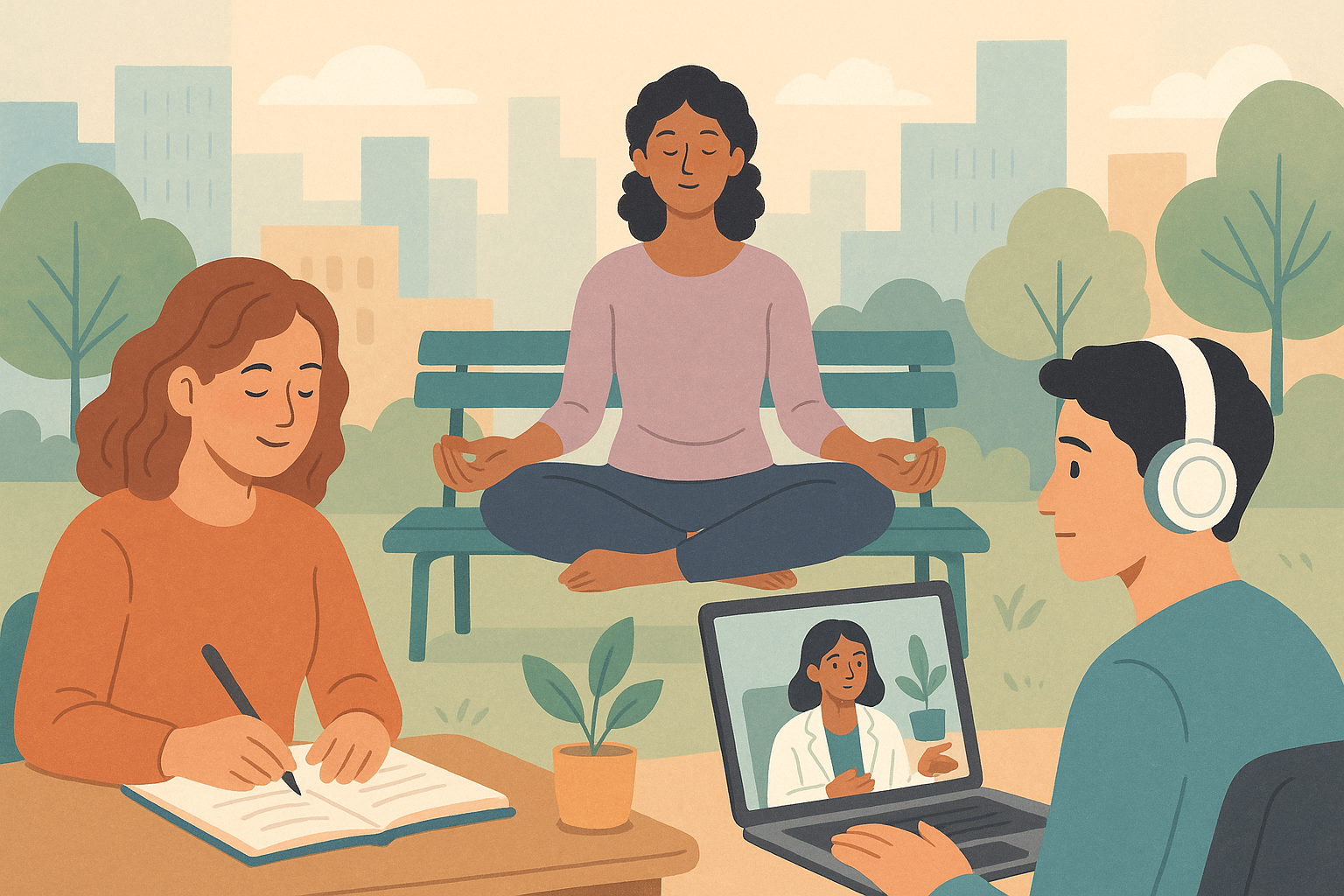
- July 24, 2025
- admin
- 0
Introduction
If you’re spending 8 or more hours a day sitting at your desk, your posture may be paying the price. Chiropractors across the U.S. are seeing a surge in posture-related problems in 2025—from chronic back pain to “tech neck.” The good news? Small daily changes can make a big difference. Let’s explore what’s causing the issue—and what to do about it.
1. Why Desk Jobs Are Destroying Posture
Sitting Weakens Core Muscles
Long hours of sitting can switch off your core. Your abs and lower back muscles become inactive, leading to slouching and poor spine alignment.
“Tech Neck” Is Becoming a National Problem
Improper monitor height causes people to lean forward, putting immense strain on the neck. For every inch your head shifts forward, it adds up to 10 pounds of pressure on your neck muscles.
2. What Chiropractors Are Seeing in 2025
A recent study from the National Chiropractic Association reveals:
73% of desk workers experience back or neck pain every week
51% say their posture worsened due to hybrid work setups
Common conditions include:
Cervical kyphosis
Lumbar disc compression
Thoracic immobility
3. Signs Your Posture Is Hurting Your Health
Not sure if your posture is a problem? Look out for:
Tight shoulders or upper back fatigue
Headaches after screen time
Uneven shoulders or hips
A noticeable improvement in how you feel after stretching
4. Chiropractor-Recommended Fixes for Desk Workers
| Problem | Solution |
|---|---|
| Slouching in your chair | Use a lumbar support pillow |
| Monitor too low | Raise it to eye level |
| Hunched shoulders | Stretch your chest, strengthen your back |
| Sitting too long | Stand up every 30 minutes, walk 2–3 mins |
| Weak glutes | Add hip bridges and squats to your routine |
| Tight hip flexors | Do psoas stretches or foam rolling |
5. Perfect Your Desk Setup for Better Posture
Monitor: Your eyes should hit the top third of the screen
Chair: Adjustable lumbar support, seat depth, and armrests
Keyboard & Mouse: Keep wrists straight; avoid overreaching
Desk Height: Elbows should be at a 90° angle, shoulders relaxed
6. Movement Is the Best Medicine
Don’t just sit—move often. Chiropractors recommend:
Hourly breaks with simple stretches
Standing desks used in intervals, not all day
Apps like Stretchly, MoveReminder, and Upright to build posture habits
FAQs
1. Is sitting really the new smoking?
It’s not quite as harmful, but yes—chronic sitting contributes to spine and posture issues.
2. Can chiropractic adjustments fix posture?
They help realign the spine, but long-term success also requires movement and strength training.
3. How often should I stand at work?
At least every 30–60 minutes. Even two minutes of walking helps.
4. What’s the best chair for posture?
Chairs with lumbar support and full adjustability. Herman Miller and Steelcase are top picks.
5. Will a standing desk solve everything?
No, but alternating between sitting and standing can reduce strain if done properly.
6. Should I visit a chiropractor even if I’m not in pain?
Yes—preventative care can help maintain good alignment and prevent issues before they start.
Conclusion
Your desk setup and daily habits could be the reason for your discomfort—but they don’t have to be. By adjusting your workspace, taking regular movement breaks, and seeking expert care when needed, you can protect your posture and your long-term health. In 2025, let better posture become part of your productivity plan.
Introduction
If you’re spending 8 or more hours a day sitting at your desk, your posture may be paying the price. Chiropractors across the U.S. are seeing a surge in posture-related problems in 2025—from chronic back pain to “tech neck.” The good news? Small daily changes can make a big difference. Let’s explore what’s causing the issue—and what to do about it.
1. Why Desk Jobs Are Destroying Posture
Sitting Weakens Core Muscles
Long hours of sitting can switch off your core. Your abs and lower back muscles become inactive, leading to slouching and poor spine alignment.
“Tech Neck” Is Becoming a National Problem
Improper monitor height causes people to lean forward, putting immense strain on the neck. For every inch your head shifts forward, it adds up to 10 pounds of pressure on your neck muscles.
2. What Chiropractors Are Seeing in 2025
A recent study from the National Chiropractic Association reveals:
-
73% of desk workers experience back or neck pain every week
-
51% say their posture worsened due to hybrid work setups
-
Common conditions include:
-
Cervical kyphosis
-
Lumbar disc compression
-
Thoracic immobility
-
3. Signs Your Posture Is Hurting Your Health
Not sure if your posture is a problem? Look out for:
-
Tight shoulders or upper back fatigue
-
Headaches after screen time
-
Uneven shoulders or hips
-
A noticeable improvement in how you feel after stretching
4. Chiropractor-Recommended Fixes for Desk Workers
| Problem | Solution |
|---|---|
| Slouching in your chair | Use a lumbar support pillow |
| Monitor too low | Raise it to eye level |
| Hunched shoulders | Stretch your chest, strengthen your back |
| Sitting too long | Stand up every 30 minutes, walk 2–3 mins |
| Weak glutes | Add hip bridges and squats to your routine |
| Tight hip flexors | Do psoas stretches or foam rolling |
5. Perfect Your Desk Setup for Better Posture
-
Monitor: Your eyes should hit the top third of the screen
-
Chair: Adjustable lumbar support, seat depth, and armrests
-
Keyboard & Mouse: Keep wrists straight; avoid overreaching
-
Desk Height: Elbows should be at a 90° angle, shoulders relaxed
6. Movement Is the Best Medicine
Don’t just sit—move often. Chiropractors recommend:
-
Hourly breaks with simple stretches
-
Standing desks used in intervals, not all day
-
Apps like Stretchly, MoveReminder, and Upright to build posture habits
FAQs
1. Is sitting really the new smoking?
It’s not quite as harmful, but yes—chronic sitting contributes to spine and posture issues.
2. Can chiropractic adjustments fix posture?
They help realign the spine, but long-term success also requires movement and strength training.
3. How often should I stand at work?
At least every 30–60 minutes. Even two minutes of walking helps.
4. What’s the best chair for posture?
Chairs with lumbar support and full adjustability. Herman Miller and Steelcase are top picks.
5. Will a standing desk solve everything?
No, but alternating between sitting and standing can reduce strain if done properly.
6. Should I visit a chiropractor even if I’m not in pain?
Yes—preventative care can help maintain good alignment and prevent issues before they start.
Conclusion
Introduction
If you’re spending 8 or more hours a day sitting at your desk, your posture may be paying the price. Chiropractors across the U.S. are seeing a surge in posture-related problems in 2025—from chronic back pain to “tech neck.” The good news? Small daily changes can make a big difference. Let’s explore what’s causing the issue—and what to do about it.
1. Why Desk Jobs Are Destroying Posture
Sitting Weakens Core Muscles
Long hours of sitting can switch off your core. Your abs and lower back muscles become inactive, leading to slouching and poor spine alignment.
“Tech Neck” Is Becoming a National Problem
Improper monitor height causes people to lean forward, putting immense strain on the neck. For every inch your head shifts forward, it adds up to 10 pounds of pressure on your neck muscles.
2. What Chiropractors Are Seeing in 2025
A recent study from the National Chiropractic Association reveals:
-
73% of desk workers experience back or neck pain every week
-
51% say their posture worsened due to hybrid work setups
-
Common conditions include:
-
Cervical kyphosis
-
Lumbar disc compression
-
Thoracic immobility
-
3. Signs Your Posture Is Hurting Your Health
Not sure if your posture is a problem? Look out for:
-
Tight shoulders or upper back fatigue
-
Headaches after screen time
-
Uneven shoulders or hips
-
A noticeable improvement in how you feel after stretching
4. Chiropractor-Recommended Fixes for Desk Workers
| Problem | Solution |
|---|---|
| Slouching in your chair | Use a lumbar support pillow |
| Monitor too low | Raise it to eye level |
| Hunched shoulders | Stretch your chest, strengthen your back |
| Sitting too long | Stand up every 30 minutes, walk 2–3 mins |
| Weak glutes | Add hip bridges and squats to your routine |
| Tight hip flexors | Do psoas stretches or foam rolling |
5. Perfect Your Desk Setup for Better Posture
-
Monitor: Your eyes should hit the top third of the screen
-
Chair: Adjustable lumbar support, seat depth, and armrests
-
Keyboard & Mouse: Keep wrists straight; avoid overreaching
-
Desk Height: Elbows should be at a 90° angle, shoulders relaxed
6. Movement Is the Best Medicine
Don’t just sit—move often. Chiropractors recommend:
-
Hourly breaks with simple stretches
-
Standing desks used in intervals, not all day
-
Apps like Stretchly, MoveReminder, and Upright to build posture habits
FAQs
1. Is sitting really the new smoking?
It’s not quite as harmful, but yes—chronic sitting contributes to spine and posture issues.
2. Can chiropractic adjustments fix posture?
They help realign the spine, but long-term success also requires movement and strength training.
3. How often should I stand at work?
At least every 30–60 minutes. Even two minutes of walking helps.
4. What’s the best chair for posture?
Chairs with lumbar support and full adjustability. Herman Miller and Steelcase are top picks.
5. Will a standing desk solve everything?
No, but alternating between sitting and standing can reduce strain if done properly.
6. Should I visit a chiropractor even if I’m not in pain?
Yes—preventative care can help maintain good alignment and prevent issues before they start.
Conclusion
Your desk setup and daily habits could be the reason for your discomfort—but they don’t have to be. By adjusting your workspace, taking regular movement breaks, and seeking expert care when needed, you can protect your posture and your long-term health. In 2025, let better posture become part of your productivity plan.


